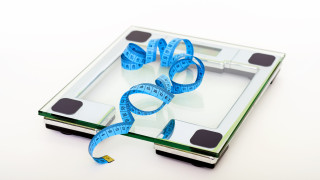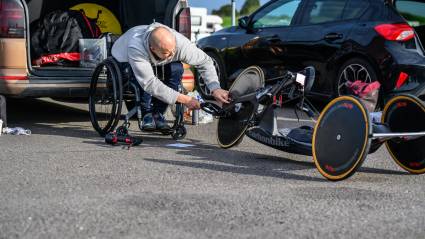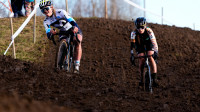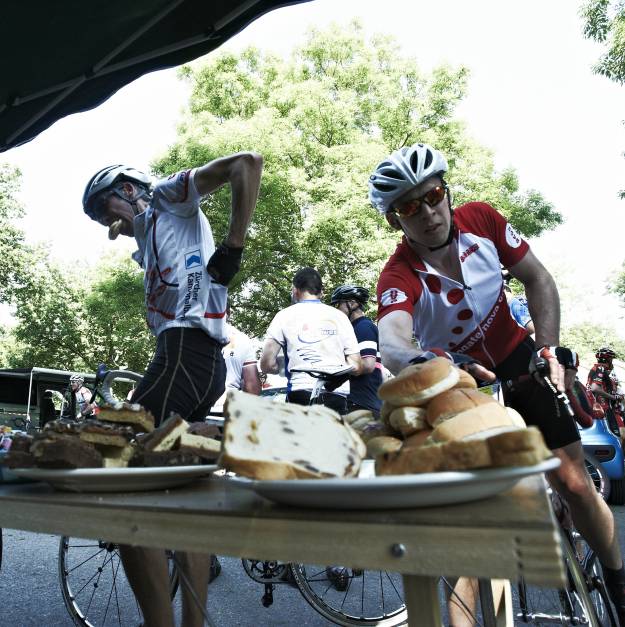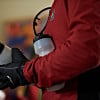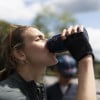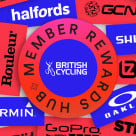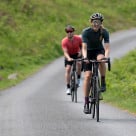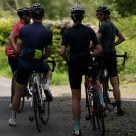Many riders think that losing a few kilograms is a guaranteed way to get faster on the bike but, if you lose that weight too quickly or in the wrong way, it can actually be detrimental to both health and performance.
Tracking your weight
If you have access to it, keeping track of your body composition using skin-fold measurements combined with weight is the ideal. Many qualified sport and exercise nutritionists and dieticians offer this service.
However, weight alone will still give you a good idea. The key thing to realise is that your weight does fluctuate significantly throughout the day. So, always aim to weigh first thing in the morning, wearing as little as possible and after you’ve been to the loo. That way you’ll get as consistent readings as possible.
How often you weigh is very much an individual thing. Daily weighing allows you to track changes but can be demotivating as it’s not unusual for weight to go up from one day to the next, despite an overall downward trend. Weekly can be good but go for Monday mornings as that will help to keep you on track over the weekend. Avoid multiple weigh-ins during a day as this will tell you very little and any change will be down to hydration levels and food in the digestive tract.
Body Mass Index (BMI) is a simple method to gain an idea of whether you could stand to lose some weight. Although it can be erroneous if you’re especially muscular, for the majority of people it’s a decent gauge. Aim for a healthy BMI between 18.5 and 25 kg/m2.
Plan and periodise your diet
In the same way that you plan your training, do the same with your diet. Periods of hard training aren’t necessarily the best time to try and lose weight as calorie restriction may compromise the effectiveness of your training.
By following a structured training plan, like one of our Digital Training Plans, you'll know what rides you have coming up and can tailor your nutrition accordingly.
If you typically do three key sessions per week, maybe two higher intensity sessions midweek and a longer steadier ride at the weekend, fuel well for the two high intensity sessions and then use rest days and the endurance ride to create a net calorie deficit for the week.
Don’t mindlessly eat the same meals every day. If you haven’t got a big ride, do you need that massive bowl of porridge for breakfast, maybe an omelette would be a better choice? Fuel appropriately for the training you’re doing. Plan your meals and snacks for 3-5 days in advance. This will help you to stay on track with eating well, challenge you to adapt what you eat around training and even help you to write your shopping list for the week.
Any weight loss should be gradual as this will have less negative impact on your performance and help to preserve your muscle tissue. Approximately 0.3-0.5 kg per week is a good rate of loss to aim for.
Calories in and calories out
Accurately measuring energy intake and expenditure is notoriously difficult. You only have to compare the calorie burn figures given for a ride on different training platforms to see this. An accurately calibrated power meter will give the best data but even this can be subject to inaccuracies.
For logging calories in, there are some good apps but, with user provided information, errors with weighing and portion sizes and other issues, it’s easy to see how inaccuracies can creep in. However, for many people, the process of tracking food intake can be beneficial but it’s important not to become obsessive about it.
Use the information you have to get a ballpark figure but don’t try and eat or exercise down to the precise calorie.
Track your weight and body composition and use changes in that over time to then tweak your diet and training.
Don’t ignore the power of power to weight
Power to weight, usually a rider’s Functional Threshold Power (FTP) divided by their weight in kilograms, is a metric that’s frequently talked about by cyclists.
It’s very easy to get obsessed by the weight side of the equation but, if that weight loss is at the expense of power, performance can actually go down.
This particularly applies if you’re focusing on the track, flat time trials or a flatter more power focused sportive such as Paris-Roubaix.
Simple weight loss tips
For many riders simply cutting out non-essential calories will create the calorie deficit necessary for weight loss. Alcohol is an obvious one along with sugary and high fat snacks and treats such as cake and biscuits. Also be aware of what you eat in the evening times after dinner, this tends to be a common time when we snack mindlessly, ignoring satiety cues.
Cut portion sizes. Using a smaller plate is a simple trick that works. Remember, that even “healthy foods”, such as nuts, seeds and avocados, can be calories dense and need to be eaten in moderation too. If you find yourself still hungry after meals, try adding an extra portion of low calorie vegetables or a bowl of soup.
Make sure all your plates follow the rule of thirds; 1/3 Carbs, 1/3 Protein and 1/3 Fruit or Vegetable. A big bowl of pasta with a tiny bit of sauce doesn’t follow this and will almost always result in overeating.
We try and encourage our riders to follow an 80/20 rule. This means they’ll be super disciplined about their diet 80% of the time but a bit more relaxed for 20%. However, if your 20% falls on the weekend, it can be easy to let things completely unravel and to undo all the good you’ve done during the week. Try to be a bit sensible and introduce some structure and routine.
If you're struggling with weight loss, check out this article which outlines some of the common pitfalls and mistakes riders often make.

